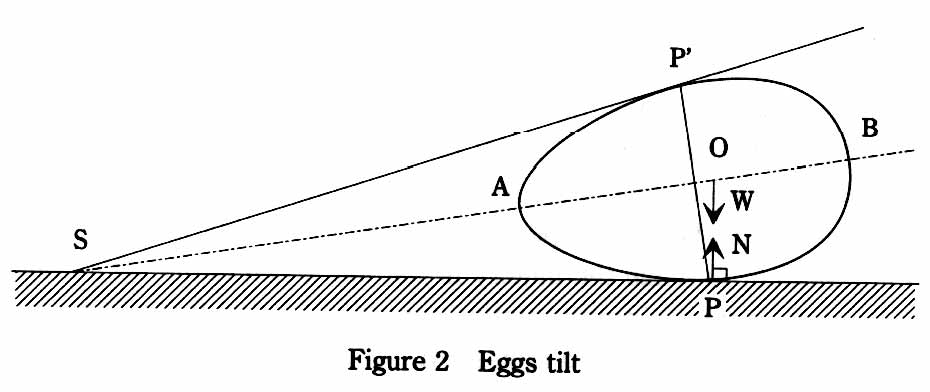Bearing in mind that the word ‘ovoid’ means ‘egg-shaped’, the question : ‘Why are eggs ovoid?’ has much in common with questions like or ‘Why are hearts heart-shaped?’ or ‘Why are sausages sausage-shaped?’ And the Zen-like qualities of the egg-shape question have not escaped professor Yutaka Nishiyama, (Osaka University of Economics, Japan) who decided to approach this enigmatic problem from a mathematical viewpoint in his paper ‘The mathematics of egg shape’ (Osaka Keidai Ronshu, Vol. 58, Sept. 2007). In which the professor not only developed a formula to describe egg-shapes -

- but also derived a method of visualising how such an ovoid might rest on a flat surface.

“As shown in Figure 2, the gravity force W from the egg’s center of mass O, and the reaction force N from the contact point P lie on the same straight line, and the major axis stabilizes with a tilt. I explained this using the terminology of physics, but everyone knows that eggs tilt like this.”
This tilt, he explains, means that eggs don’t roll nearly as well as spheres do, and instead tend to self-stabilise on gentle slopes. Thus complementing the mathematical focus with a biological / evolutionary one…
For, it’s suggested, ovoid eggs may have an advantage over spherical ones (in that they don’t roll so well). And thus, species of birds which lay a clutch of eggs on say, gently sloping rocky outcrops, may have a better chance of survival. Either way, the professor urges further investigations in egg-rolling - using a gently-sloping tabletop, and an un-boiled ‘ovoid’ egg. “I’d like for those readers who have until now had no interest in the shape of eggs to begin by confirming this experimentally.”





Comments